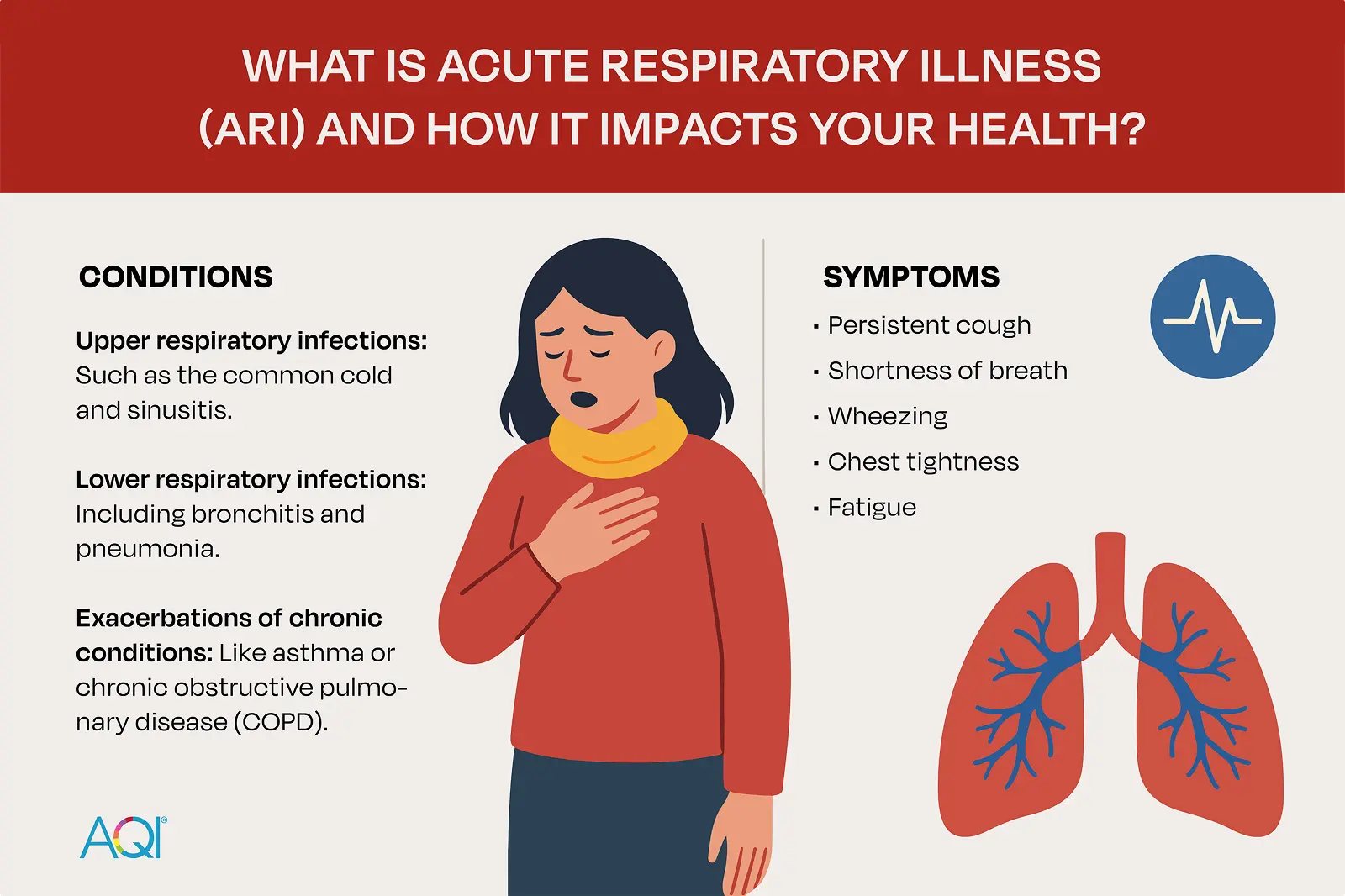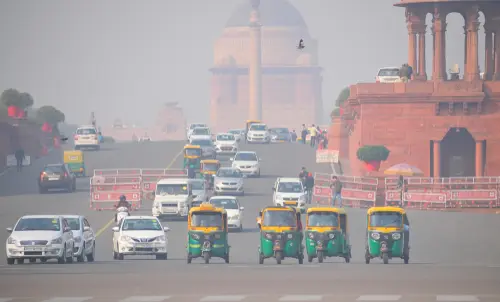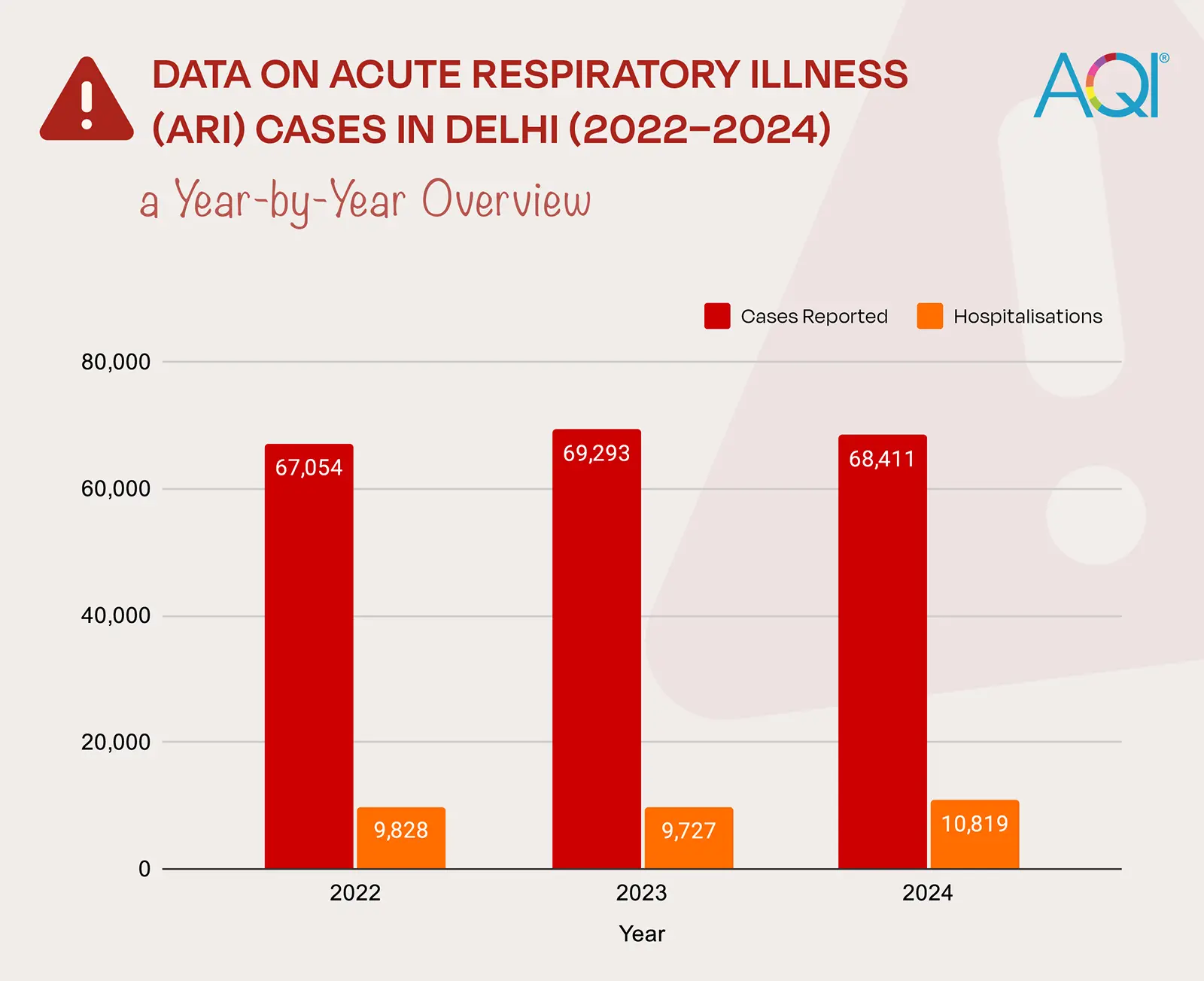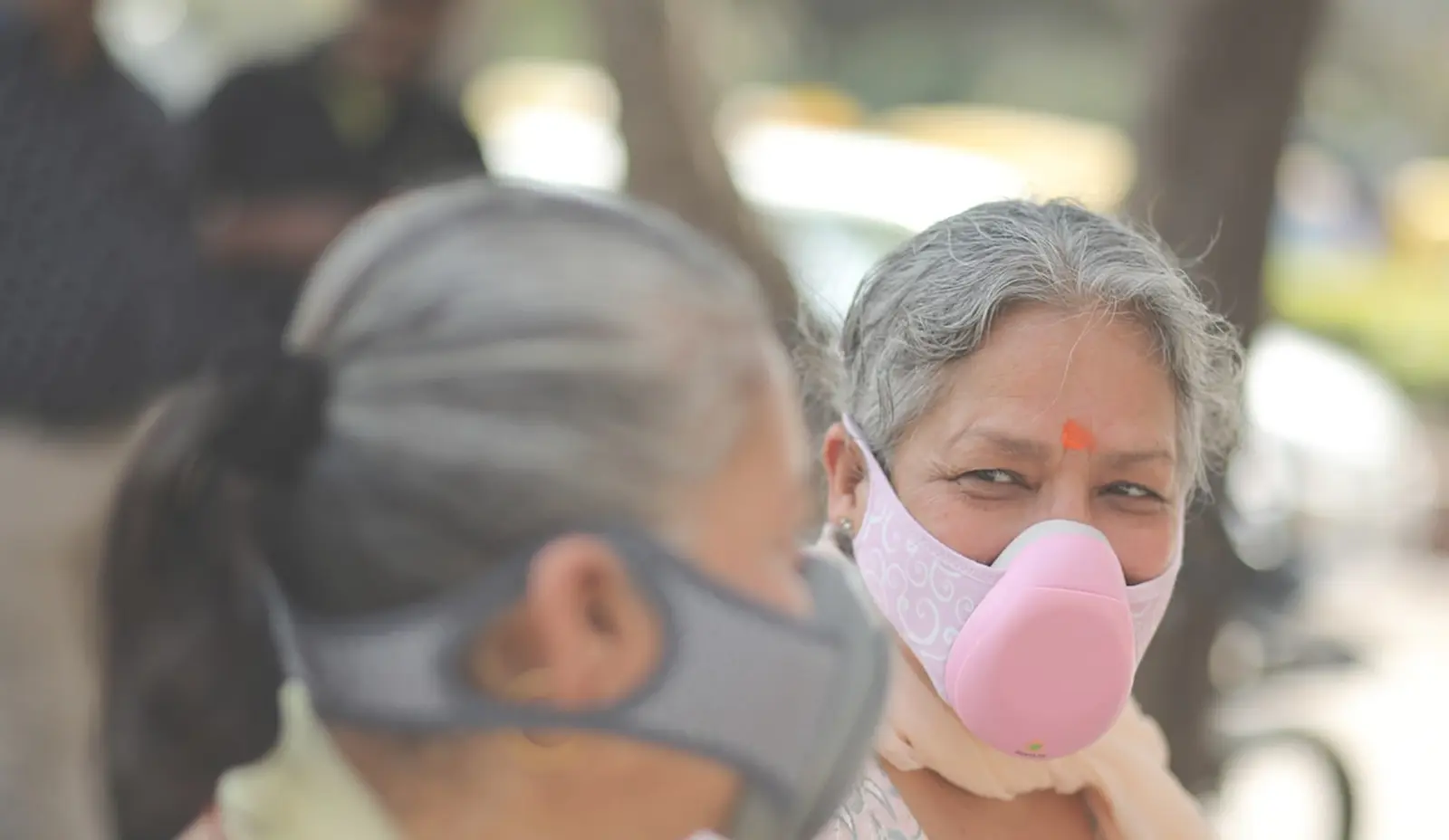Do you know that more than 2 lakh residents in Delhi reported acute respiratory illness from 2022 and 2024? And this data is only from six central hospitals, including AIIMS, RML, and Safdarjung. The suspected major cause? Air pollution. Yes, air pollution hospitalisations in Delhi alone are over 30,000 in just three years for severe respiratory issues.
These are not just numbers. It’s an alarming situation not just for public health, but also for the economy of India’s capital. These aren’t ordinary colds or coughs; doctors classify them as Acute Respiratory Illnesses (ARI). In 2024 alone, around 68,411 cases of ARI were reported. If each of these individuals missed just one day of work or school, Delhi could see a productivity loss of over ₹200 crore in a single day.
Think about it: the cost isn’t just financial. Families bear the emotional and physical burden, worrying about health, managing hospital visits, and enduring sleepless nights. It’s their well-being and peace of mind that suffer, not just their contribution to the city’s economy.
So, what is the government saying? What does the data reveal? And most importantly, how does ARI affect people like you, day to day? To understand this better, we have gathered insights from news reports and reliable sources to show the real impact of air pollution in the capital.
What Is Acute Respiratory Illness (ARI) and How It Impacts Your Health?

We are focusing on ARI, so let us first know what conditions it involves:
- Upper respiratory infections: Such as the common cold and sinusitis.
- Lower respiratory infections: Including bronchitis and pneumonia.
- Exacerbations of chronic conditions: Like asthma or chronic obstructive pulmonary disease (COPD).
These conditions can manifest through symptoms like:
- Persistent cough
- Shortness of breath
- Wheezing
- Chest tightness
- Fatigue
Why Are Delhi Residents More Affected?
Delhi’s unique geographical and climatic conditions, combined with high levels of air pollution, make its residents particularly vulnerable to ARI. Factors contributing to this heightened risk include:
- High PM2.5 levels: Delhi’s annual average PM2.5 concentration is approximately 100 µg/m³, significantly exceeding the World Health Organisation’s recommended limit of 5 µg/m³.
- Seasonal pollution spikes: During winter months, the burning of crop residues in neighbouring states and increased use of heating systems lead to elevated pollution levels.
- Traffic emissions: Vehicle exhaust contributes significantly to the city’s air pollution, with emissions of PM2.5, carbon monoxide and other pollutants.
- Indoor pollution: Use of solid fuels for cooking and heating in households can increase exposure to indoor air pollutants, further elevating the risk of ARI.
The Daily Impact on Delhi Residents
The prevalence of ARI in Delhi affects daily life in several ways:

- Increased healthcare visits: Hospitals and clinics experience a surge in patients seeking treatment for respiratory symptoms, leading to wait times and strain on medical resources.
- School and work absenteeism: Children and adults alike miss school and work due to illness, impacting education and productivity.
- Economic burden: The cost of medical treatments, medications, and hospitalisations places a financial strain on families and the healthcare system.
- Quality of life: Chronic respiratory issues can lead to long-term health complications, affecting overall well-being and life expectancy.
What Does the Recent Government Data Say About Air Pollution Hospitalisations in Delhi?
The latest data from Delhi’s health authorities paints a worrying picture. Let us look closer at the year-wise numbers:

- 2022: 67,054 cases reported, with 9,828 hospitalisations.
- 2023: 69,293 cases reported, with 9,727 hospitalisations.
- 2024: 68,411 cases reported, with 10,819 hospitalisations.
This steady rise shows that air pollution hospitalisations in Delhi are not just seasonal spikes; they are a consistent health threat. Imagine tens of thousands of people missing work or school in a single year because of severe respiratory issues. The impact on families, productivity, and the city’s economy is enormous.
What Is the Government Saying about This Situation?
The government has not turned a blind eye to the rising cases of air pollution-related hospitalisations in Delhi. Union Minister of State for Health and Family Welfare, Prataprao Jadhav, recently addressed this crisis in Parliament. He admitted openly that “air pollution is one of the triggering factors for respiratory ailments and associated diseases.” (Source: News)
To monitor this growing health emergency, the government has set up the National Centre for Disease Control (NCDC), which now tracks air pollution-related illnesses through more than 230 sentinel surveillance sites across 30 states and Union Territories. This allows real-time tracking of respiratory illness spikes and helps in forming targeted health responses.
In Delhi specifically, the government has been pushing for measures like:
- Emergency responses during peak smog periods include school closures and restrictions on construction and vehicular movement.
- Public health advisories urge people to wear masks, reduce outdoor activity, and use air purifiers indoors.
- Collaborations with hospitals to ensure timely reporting and better preparedness during pollution peaks.
However, while these steps show intent, the sheer numbers, over 2 lakh people rushing to emergency departments in just three years, prove that the challenge is far from under control.
How You Can Protect Yourself From Air Pollution Hospitalisations in Delhi
While government policies and hospital preparedness are important, your actions matter the most when it comes to protecting your lungs. Delhi’s air is not changing overnight, but small, consistent steps in your daily routine can make a big difference in reducing your risk of respiratory illness.
Here are some practical solutions you can start today:

- Check the AQI before stepping out
Make it a habit to monitor the Air Quality Index (AQI) every morning. If pollution levels are severe, try to reschedule outdoor work or workouts. - Wear the right mask, not just any mask
A cloth mask or surgical mask isn’t enough during smog days. Use an N95 or N99 mask, which filters out fine particulate matter (PM2.5). - Create a clean air zone at home
Keep windows closed during peak pollution hours (usually early morning and late evening). Use an air purifier in your bedroom or living space, especially for children, elderly family members, or those with asthma. - Boost your body’s natural defence
Staying hydrated, eating foods rich in antioxidants (like fruits, leafy greens, nuts), and doing regular breathing exercises can help your lungs fight pollutants better. - Avoid high-pollution triggers
Activities like burning incense, using strong chemical cleaners, or smoking indoors add to indoor air pollution. - Seek medical help early
If you notice a persistent cough, wheezing, or breathlessness, don’t delay visiting a doctor. Early treatment can prevent minor irritation from escalating into severe acute respiratory illness (ARI).
Don’t wait for the next pollution spike to take action—start protecting your lungs today. Stay updated with the latest AQI levels in Delhi on AQI.IN and take control of the air you breathe.